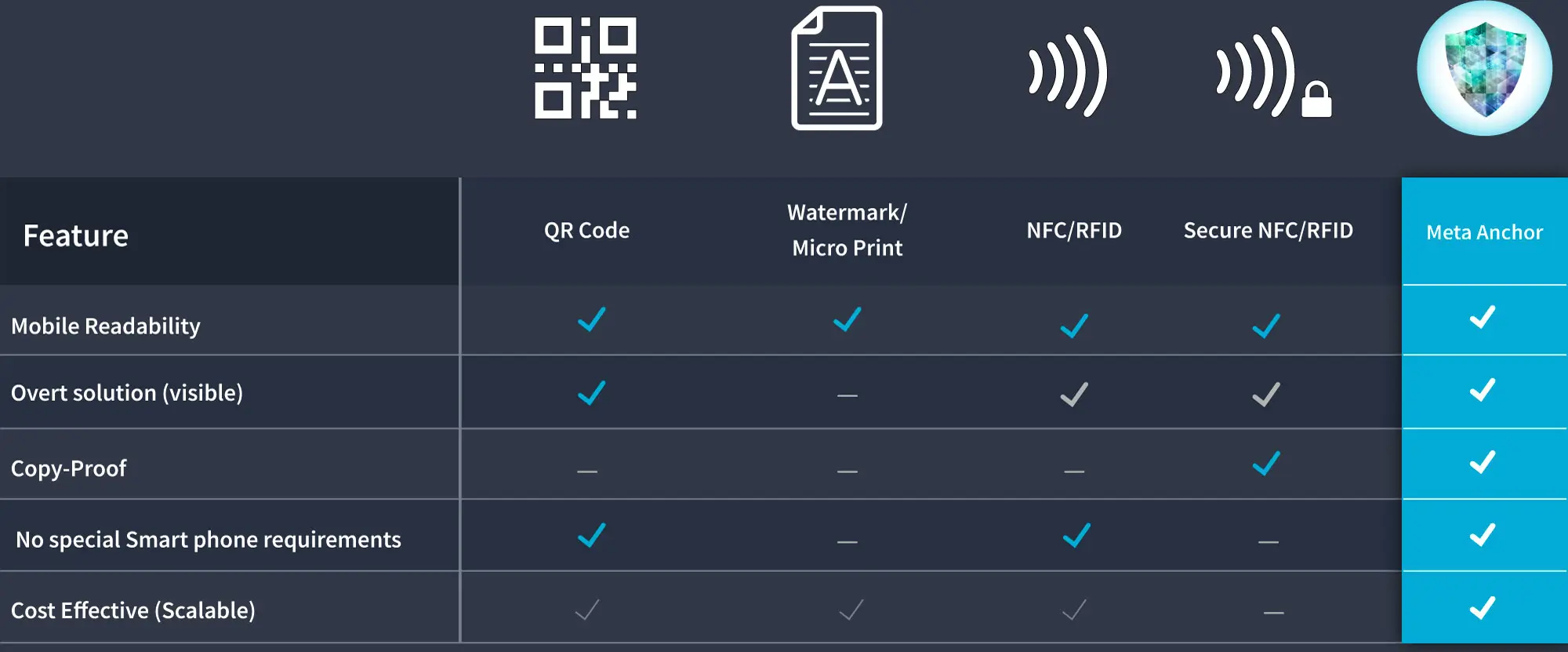FAQ
Find answers to your questions about Holographic Fingerprint, Meta Anchor technology and discover how to set up your own Digital Soul project. Still something missing? Hit us up on Discord!
MetaAnchor Technology
- A physical MetaAnchor Label featuring Authentic Vision’s Holographic Fingerprint technology.
- The MetaAnchor Mobile App (or an SDK built into your own app)
- The MetaAnchor backend infrastructure
- And the SIPv4 token.
You can either build your own Web2 or Web3 applications on top of it or use one of Authentic Vision’s offered digital services.
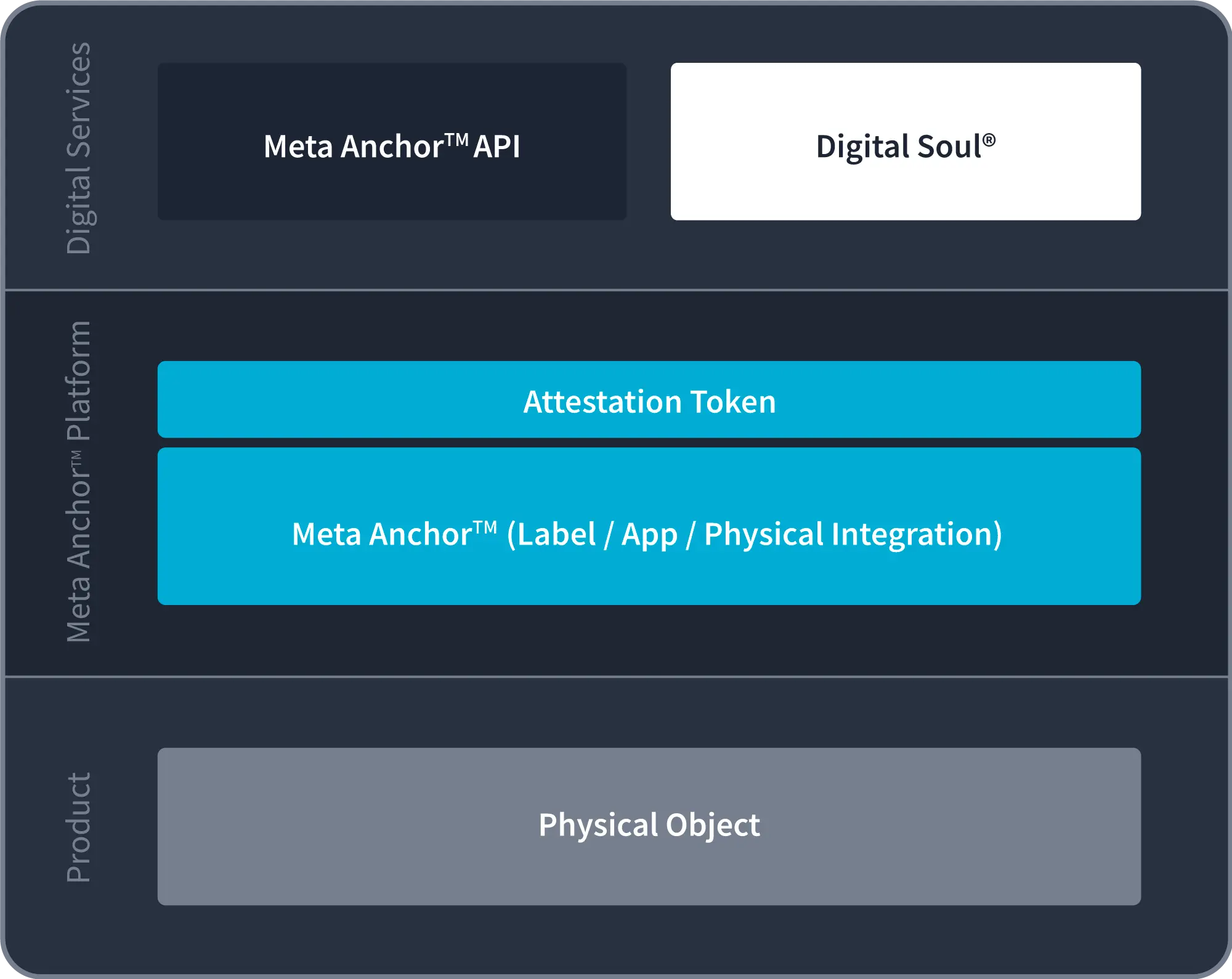
MetaAnchor technology offers bank-grade security. It has been audited for use in Fintech and Banking. Further, MetaAnchor technology successfully protects physical goods from counterfeits internationally and in challenging markets such as Peru, Egypt, Lebanon, China, and many others. It is battle-tested for various industries and use-cases. More details can be found at https://www.metaanchor.io
No! QR-Codes can be copied or photographed. MetaAnchor technology uses Authentic Vision’s Holographic Fingerprint technology, making it copyproof and robust against code-sharing and other presentation attacks.
Yes and No.
Our prorietary MetaAnchor Label relies on Holographic Fingerprints and optical authentication, providing a more cost-effective solution compared to (secure) NFC. The MetaAnchor platform also supports NFC Chips instead of the MetaAnchor Label, e.g. the wide-spread NXP NTags.
Physical: MetaAnchor Label
The MetaAnchor Secure Label features Authentic Vision’s battle-hardened and patent-protected Holographic Fingerprint technology. It consists of a shield-shaped holographic security feature and a QR-Code.
It further features a tamper-evident VOID structure which ensures that the label cannot be removed from the original physical item and reused on a fake physical item.
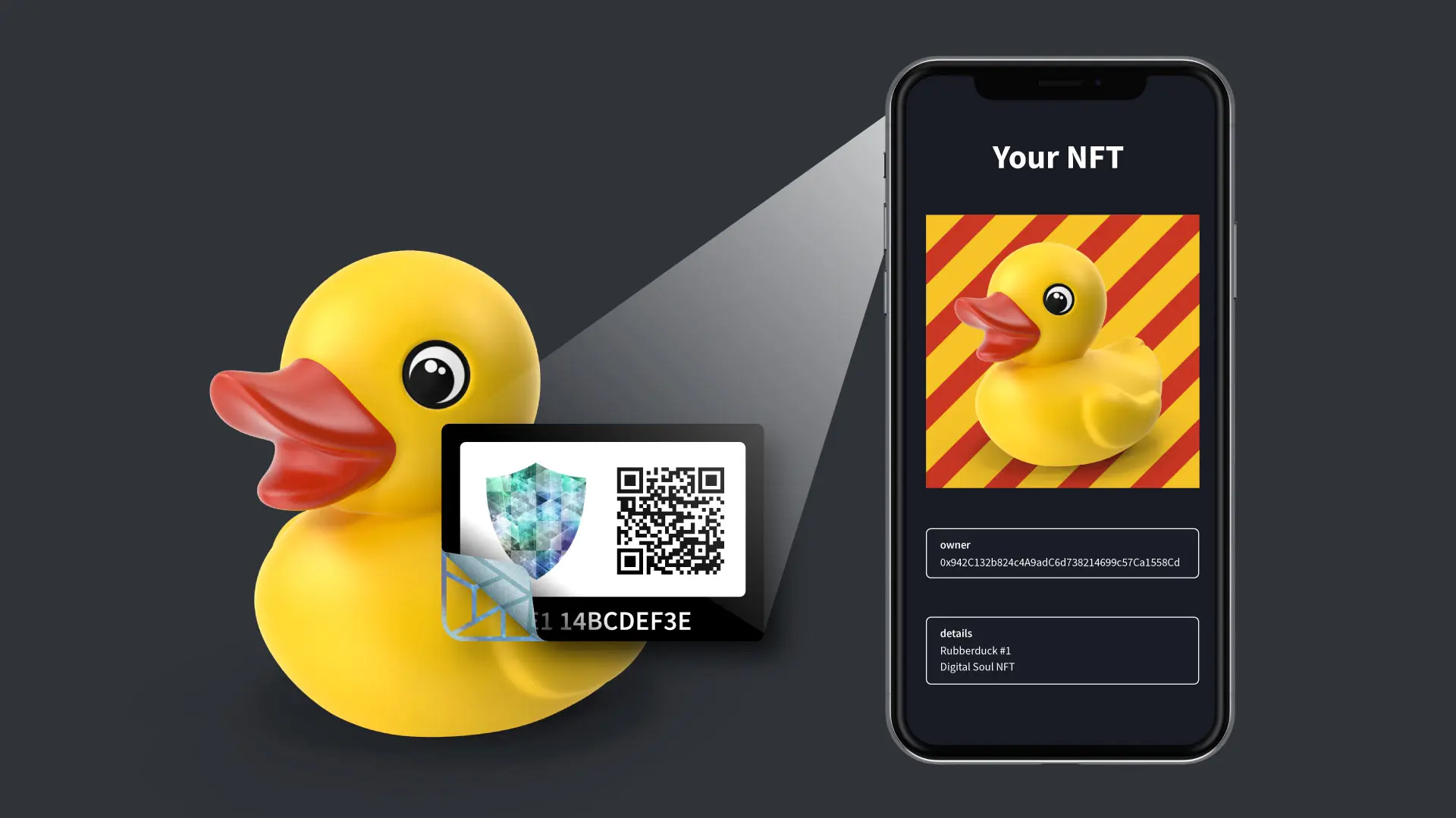
A standard label is 20.5 x 14mm
Good question! For authentication we scan the Holographic Fingerprint of the shield-shaped hologram.
The QR code encodes an encrypted MetaAnchor Secure Label Identifier (SLID) as well as a URL. When a user scans the MetaAnchor-Label with a Standard QR-Code reader, the user is forwarded to aanding page or directly to the MetaAnchor-App installation from App-Store / Play-Store. The behavior when scanning with a Standard QR-Code reader can be customized.
Our standard label generally can be attached well on flat, smooth surfaces with high surface energy (e.g. metal, glass). If the surface is not flat, rough and/or has a low surface energy, adhesion and tamper-evident function of the labels needs to be tested.
We have different standard labels in our program and ask you for the DevKit as well as Startup-Package to provide us with a photo from the physical item and mark where you intend to integrate / attach the label. This allows us to select the best label option for you.
Our Labels have a tamper-evident structure on the back side, which gets triggered if somebody tries to remove the label from a physical item. The MetaAnchor algorithm stack detects such tampering events and does no longer allow to authenticate the label, as it presumably has been removed from the original physical item and may be placed on a fake item.
Most likely you’ve touched the label on the backside while applying it to the physical item. This triggers the VOID-structure (see above) and is interpreted as a fraud attempt. That’s why we block authentication of such accidentially damaged labels.
It should go without saying, but you need to scan the original, physical MetaAnchor label. Scanning from a photo, video, … is a common attack vector and detected as such.
No! MetaAnchor Labels have a VOID-structure which prevents exactly that. See “What is the VOID structure of a MetaAnchor Label?”
Each MetaAnchor Secure Label has a unique ID, commonly called the SLID. You will receive a list of all IDs with your onboarding mail.
We also offer Human-Serialized versions on the label (e.g. 001, 002, …) for limited editions.
Digital: MetaAnchor-enabled Services
After a successful authentication of the MetaAnchor-Label, the MetaAnchor Attestation Token provides detailed information on the interaction with the MetaAnchor Label; the MetaAnchor Secure Label ID, time of authentication, installation-id to identify users in an GDPR-compliant way and if available location of the scan as well as an indication whether an fraud attempt has been detected. All this data is cryptographically signed and provided through the Attestation Token.
Services offered by Authentic Vision or our partners (Loyalty program, DigitalSoul-NFT, …) utilize the same Attestation Token mechanism.
The Meta Anchor Attestation token is crucial for you chose to design your own dApp / service using MetaAnchor-technology. We append it as a get parameter to your specified campaign-URL in the Order form, in the form http://my-campaign.url?av_attestation=<…>
Details can be found at the Attestation Token documentation.
MetaAnchor is a platform – you can use it for a large amount of use-cases. For some of them Authentic Vision offers services, but we want to enable much more which are beyond our imagination.
DigitalSoul-NFTs is one of the services Authentic Vision offers on top of the MetaAnchor-platform. It is explained in great detail below.
DigitalSoul-NFT
Yes. It is an ERC-6956 Asset-Bound NFT, which is fully compatible to THE NFT-Standard ERC-721. On Market places such as OpenSea, the DigitalSoul-NFTs will actually be displayed as ERC-721 NFTs.
With the DigitalSoul-NFT you can do everything you can do with a normal NFT
- plus transfer it through transferring the physical item
- plus bind the NFT 1:1 and inseparable to a physical item forever.
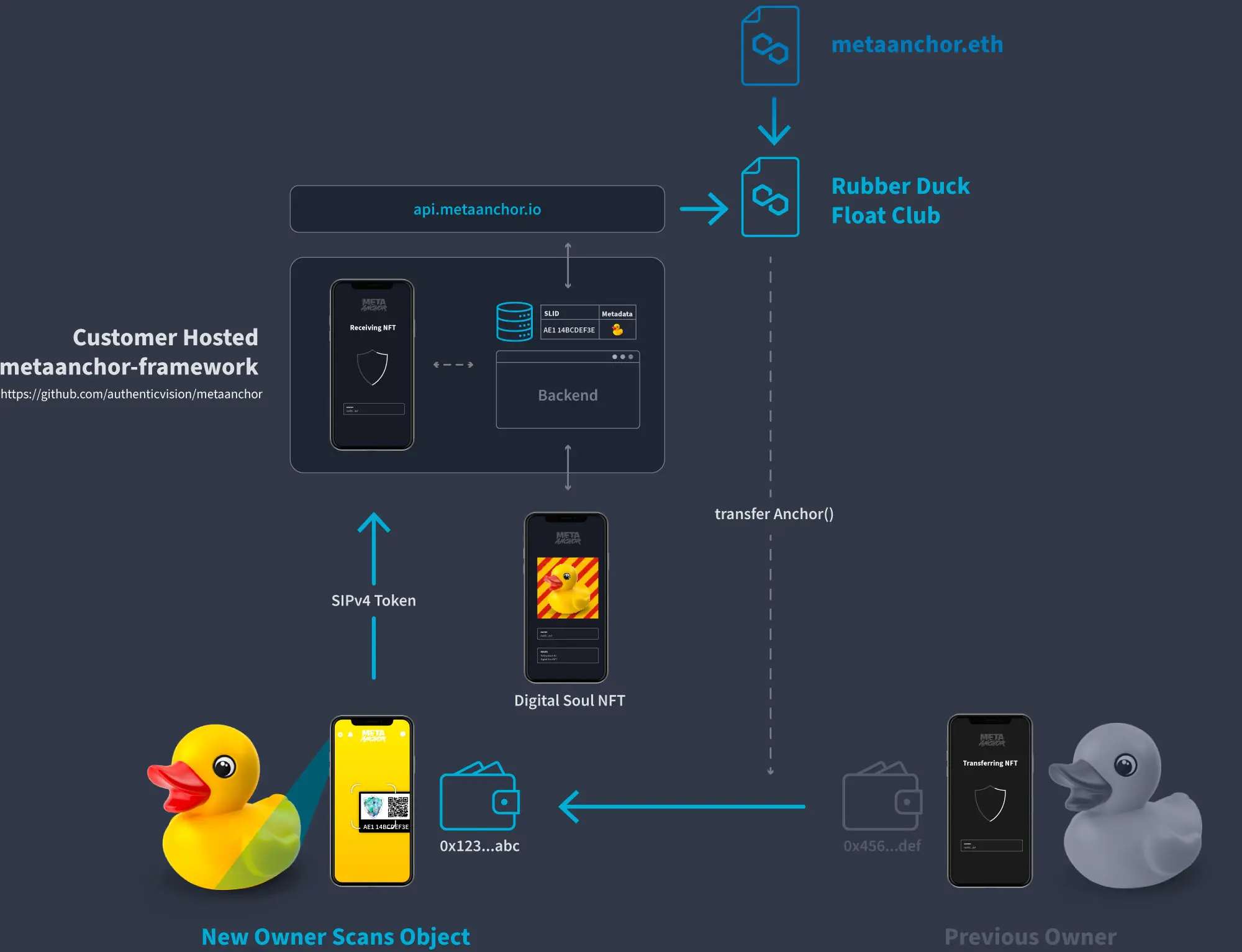
This framework is ready-to-go and offers
- The landing page, which is shown after scanning one of your DigitalSoul-NFT labels. You can adapt it as you like.
- A database, where you can manage the appearance of each DigitalSoul-NFT. The cool thing – the NFT data is stored to the MetaAnchor Secure Label Identifier (SLID), which is the Human-Readable alphanumeric Serial on each physical label. You don’t need to mess around with hashes, token-ids and other Web3-related mechanics.
- That’s it – nothing more to do 😉
The Framework
Don’t worry, it’s easy to use, even if you were not in touch with programming or web-development before. The Framework and installation instructions can be found at https://github.com/authenticvision/metaanchor
Disclaimer: The Framework is work in progress. We aim to make working with it as friendly as you know it from WordPress or phpMyAdmin. A.t.m it is a bit more technical, but we’re happy to help you out in the meantime via Discord! Also, the framework is open-source, we appreciate your contribution!
Digital Soul NFTs live on Polygon-Mainnet.
For Startup-Kit and other commercial uses we can support other EVM-compatible blockchains as well. Let us know when ordering or approach us in our Discord.
Yes. We recommend Metamask and Coinbase-Wallets, which seem to have the lowest entry barrier and are supported by most browsers, dApps and mobile devices.
You! When ordering labels, you need to specify the wallet-address, which we should designate of the owner of the smart contract.
By being the owner you can also transfer the ownership to another wallet later on by directly interacting with your smart contract.
- Manage the appearance, description, Logo etc on Marketplaces such as OpenSea. just log in there with the owner-wallet you provided to us when ordering DevKit or StartupKit.
- Transfer ownership to another wallet.
- Act as the owner in any other application. DigitalSoul-NFT Smart Contracts implement the ERC-173 Contract Ownership Standard.
The MetaAnchor-labels supported in the contract, their transfers and other management functionality is managed through the MetaAnchor-backend accessible via api.metaanchor.io
DigitalSoul-NFTs are built on top of a Ethereum Improvement Proposal (EIP) we drafted, the ERC-6956 “Asset-Bound NFT”.
So DigitalSoul-NFT is an Asset-Bound NFT with some extras. The extras include functionality for you to actually own the contract, an open-source framework for you to design and manage your DigitalSoul-NFT collection and much more.
